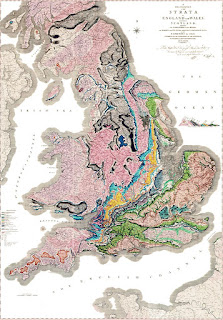Our
understanding of the age of the Earth has radically changed over time. Geologists
have developed a geologic time scale to reflect our best understanding of
Earth’s history. This helps people around the world communicate and is revised regularly
to reflect current knowledge.
Determining
the age of Earth
People have taken
many approaches to determining the age of Earth. Aristotle thought Earth had
always existed, whilst Christian philosophers came up with an age of
approximately 6,000 years based on the Bible.
James Hutton,
the founder of modern geology, carefully observed processes of weathering and
deposition. He realised that the deposition and folding of layers of rock would
require much more than 6,000 years. Some scientists used modelling to determine
Earth’s age. Comte du Buffon estimated Earth’s age at 75,000 years based on
cooling a globe with a similar composition to Earth. Lord Kelvin used data from
increasing temperature with depth and came up with 20 million years. John Perry
modelled Earth with convection and estimated 2 – 3 billion years.
Arthur
Holmes perfected the technique of radiometric dating in the early 1900s, giving
scientists a powerful tool to measure the age of Earth materials and
meteorites. The oldest minerals on Earth are 4.375 billion-year-old zircon
crystals from the Jack Hills of Western Australia. Meteorites have been dated
to 4.55 billion years old.
Zircons from the Jack hills in WA are the oldest minerals
found on Earth so far. (A Cavosie, J Valley. Detrital zircons BSE micrographs
NAI 2014 Annual Science Report.jpg, Public Domain)
Video:
- How to Date a Planet
(Minute Earth)
Website:
- How Science Figured Out the Age of Earth
(Scientific American)
Using
rock layers to tell time
Steno’s rock
strata became the key to matching rocks in different locations. William Smith,
an English surveyor, noticed that fossils were always in the same order in rock
layers, even in different locations. Smith formalised the Law of Superposition
(in an undisturbed sedimentary sequence, old material is on the bottom, young
on top) and the Law of Strata (each layer has distinctive fossils). These laws
are the basis for relative dating and allow geologists to match rocks in
different locations.
Relative
dating allowed geologists to develop useful geologic maps and to define the
major subdivisions of geologic time used today. They recognised mass
extinctions that marked the end of one era and beginning of another. However,
they needed radiometric dating to determine exactly when this occurred.
William Smith’s geologic map of Britain and Wales is
recognised as a major milestone in geology. (William Smith 1815, public domain)
Isotopes
help refine the time
Relative
dating provided an order of events, but radiometric dating revealed the length
of geologic time divisions. Arthur Holmes published The Age of the Earth
in 1913 which contained the first geologic time scale with dates.
Since
Holmes’ publication, geologists have refined the dates of geologic periods.
This requires finding igneous rocks near the boundaries of each time and
carefully dating them. The more data collected from different localities, the
more accurate the scale.
This geologic time scale shows the occurrence of some
major animal lineages in the Phanerozoic. The bar at right presents all of geologic
time. (F Lerouge 2015, Wikimedia Creative Commons)
Website:
- DatingRocks and Fossils Using Geologic Methods
(Nature Education)
Explore
the vastness of geologic time
- Make your own geologic time scale.
- Learn how scientists pieced together events in Earth’s history with UCMP Berkeley.
- See what the Earth looked like in the deep past and what it may look like in the future with Smithsonian Magazine’s Interactive Earth.




